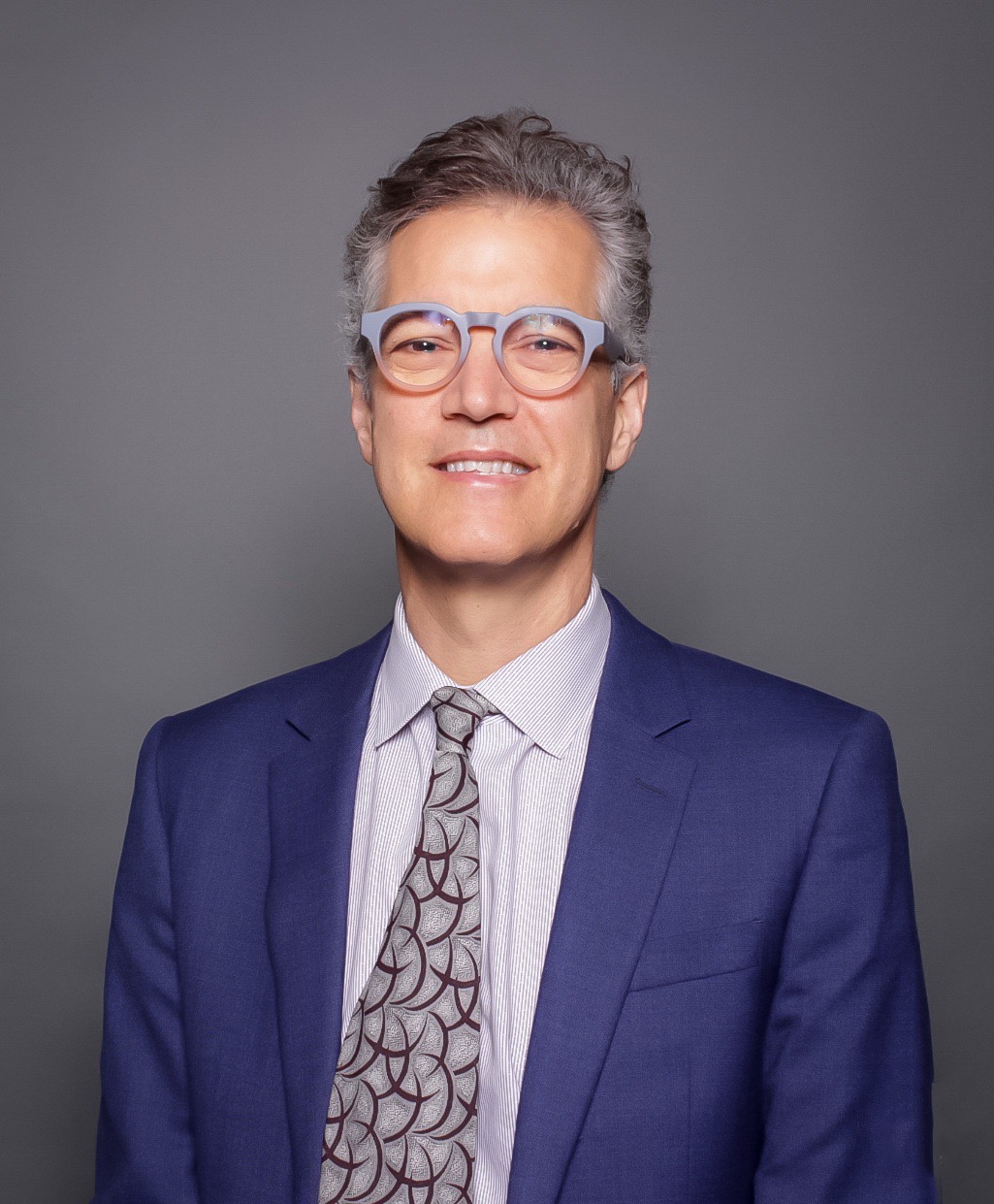by Brooke Herron
My earliest childhood memory is going to the eye doctor when I was 8 . . . life before that was a blur.
Ophthalmic Joke
At first glance, it wouldn’t seem like comedy and ophthalmology could have much in common. In fact, other than the quirky one-liner above, an Internet search reveals a startling lack of eyeball-related humor online. Of course, this makes sense as surgery is serious business. Eliciting laughs and removing cataracts are decidedly different things.
However, there is one commonality that surgeons and comedians both share – the ability to improvise. Improvisation (or improv) refers to creating an action without pre-planning. Generally, improv is used in comedy, and requires the ability to think, process and retain information quickly. That same ability is also necessary in the OT, especially when complications occur.
As such, in this CAKE cover story, we look at case studies in improvisation, with tips on how to proceed when the unwanted surprise of a complication arises.
Keep Calm and Operate On
In comedic improvisation, calming skills like meditation and deep breathing are key. That’s because performers must remain calm, but act fast, with complete awareness of their environment.
The same can be said for surgical improvisations. When a complication arises, Dr. David Lubeck, a cornea, cataract and refractive surgery specialist from Chicago, Illinois, USA, says that before any improvisation can begin, he takes a moment to focus with some deep, meditative breathing.
Understanding the flexibility and the potential of your resources is part of the broad base of knowledge that surgeons need to have.
Dr. David Lubeck
“It’s what I do, and it’s what I was taught a long time ago. When a complication happens, I immediately begin a short breathing mediation,” he explains. “I stop the procedure and mitigate anything that is pressing or urgent. This then allows me a moment to stop thinking about the case, to do a very quick (but very effective) mediation, and then come back to it.”
Dr. Lubeck says this brief moment of quiet, takes him from initial feelings like anxiety and panic, to being clearheaded and focused – and this opens the door for improvisation to mitigate the complication.
“Until you’re clearheaded, you can’t improvise,” he explains. “Once you have the ability to think laterally. You can assess everything you have at hand to help you, such as are your staff, who’s alongside you and how capable they are; your instrumentation; and the capabilities of the hospital where you’re operating (which varies a lot).”
Dr. Lubeck says it’s important to understand that certain pieces of instrumentation can be used creatively and differently than their intended design, or that the instrument itself may have multiple applications.
“Understanding the flexibility and the potential of your resources is part of the broad base of knowledge that surgeons need to have,” he says. “For all the pre-planning you can do on a case-by-case basis, you really just have to have these improvisation strategies in your head, deep in your mechanistic thinking.”
He recommends having a general, internalized strategy for handling different situations and understanding all the resources available, as well as their different uses.
Dress Rehearsal: Unstable Lenses in Cataract Surgery
A complication that Dr. Lubeck says happens frequently, but can still catch surgeons off-guard, is an unstable lens. “In these cases, there’s often no indication. But the moment you begin working on the cataract and the capsulotomy, you find the lens is unstable and you know things are not going to go as planned.”
When CAKE magazine interviewed Dr. Lubeck, he had experienced this exact complication earlier in the same day. “Invariably, what happens is, the cases you think are going to be difficult often end up being straightforward and simple, and the cases that look like they’re going to be straightforward can completely surprise you – like today. I had no indication that it was going to be a loose lens . . . there was no sign of it whatsoever.”
When this complication occurs, his first step (following a brief meditation) is to ask if his assistant is familiar with an unstable lens. Their answer is usually ‘no’, so Dr. Lubeck talks them through it:
“A loose lens means that I may have trouble extracting the lens, we may drop the lens, we may have to do a vitrectomy . . .”
Then he begins his mental – or improv – checklist, asking questions like: Are there capsule hooks? A vitrector? More visco-elastics? Once he knows what resources are available, a strategy is devised and the surgery proceeds. All of which occurs in two to three minutes.
He says that when complicated cases are approached this way, they largely turn out well, and the sense of accomplishment is far greater. “I have much greater sense of satisfaction and sense of accomplishment as a surgeon when these complicated cases turn out well, as compared to the normal cases.”
Curtain Call: The Case of the Skewered Lens
As a pediatric ophthalmologist based in Pittsburgh, Pennsylvania, USA, Dr. Kanwal Nischal has many patients referred to him with Marfan syndrome, a genetic disorder that affects the connective tissue. When this affects the eyes, it can cause the lens to dislocate spontaneously and move out of the central position.
“This happens because the zonules are weak, so their lenses move upwards and laterally,” explains Dr. Nischal. “Of course, that’s a problem: The lens in no longer central and it’s not focusing light properly.”
During these surgeries, he says that he normally removes the entire lens without the assistance of a vitreoretinal surgeon, as it’s something he can do safely. However, in one case, due to the position of the lens, Dr. Nischal was worried that the lens was going to drop into the capsular bag – and without a vitreoretinal surgeon on hand, there could potentially be a problem. Thus, his case in improvisation began.
The lens in the left eye was dislocated superiorly and laterally, so Dr. Nischal went in at 9 and 2 o’clock, and used two 30-gauge needles to skewer and fixate the lens. “Then you put the infusion in and with the vitrector, you remove the lens material and little bit of the vitreous, so you’re left with nothing in the eye,” he explains, adding that these cases are rehabilitated with a contact lens, with the option for an implant at age 21.
“Here, my improvisation was taking two needles and skewering the lens so it couldn’t fall into the back of the eye while I was removing it. And the patient’s result was good,” he says.
Dr. Nischal says this isn’t the only instance when he’s used this improvisation: “I’ve done it before in adult cataract surgery, in patients with a posterior polar cataract,” he says, “It’s not something that someone showed me, it’s an improvisation to stabilize the lens while I remove It.”
Avoiding Improv in Cases of Expulsive Hemorrhage
Some complications are so severe that surgeons plan in advance for them. For example, when approaching infant corneal transplants, one complication that Dr. Nischal always takes into consideration is an expulsive hemorrhage.
Although they can occur during any intraocular operation, in this case, once the cut is made to remove the diseased tissue and the eye is opened, for example, a change in intraocular pressure can cause the choroid to suddenly fill with blood. And if this continues, it can result in the extrusion of all the eye’s contents. In these cases, the surgeons must act rapidly to help save the eye.
“It’s the worst thing that can happen to an ophthalmic surgeon. If you were to go into any of the conferences and ask somebody, ‘have you ever had an expulsive hemorrhage?’, they would either say ‘yes’ and it was horrible, or they would touch wood 1,000 times,” says Dr. Nischal,who is most well-known for performing corneal transplants in infants.
Dr. Nischal says he had one case of expulsive hemorrhage in an infant’s eye in 2001, and since then he takes many precautions. The first thing was to change the anesthesia. “The carbon dioxide (CO2) level has to be below 30mmHg. The lower the CO2, the less positive pressure in the eye, and when you open the eye, there’s less of a change from high pressure to low pressure,” he explains, noting that this complication occurs from the sudden intraocular pressure (IOP) change.
At the moment of his initial cut, he checks the blood pressure and pulse with the anesthesiologist. And if either of them rises, the eye could be at risk, so he proceeds using the ‘sandwich technique’. Dr. Nischal says he’s employed this technique in worrisome cases just five times throughout his career.
“Normally, in a cornea transplant, the diseased cornea is removed and the donor cornea is placed and sown in,” he says. “In this sandwich technique, every time there’s a 90-degree cut, a suture is put in. You cut the host, but you’ve put in four sutures as you’ve done it.”
Next, the donor tissue is placed on top the host, but with a filling of viscoelastic to protect the donor’s endothelium. In the quadrants where there are no sutures in the host, you place them, but before the fourth is placed, the previous sutures in the host are cut. This allows the host tissue to be removed from underneath the donor tissue, and then the fourth suture can be applied.
“It’s complicated, but what you’ve essentially done is you’ve removed the host tissue without ever exposing the eye completely to an absolutely open globe,” explains Dr. Nischal, adding that this is the most technically detailed plan he undertakes to avoid a complication.
“I think what happens is that people don’t talk about expulsive hemorrhage. So in your training, no one tells you what you should do when it happens,” he says. “If you’re lucky, you come across someone who’s had it. Most people, when it happens, they are so stunned that it’s too late to do anything.”
Innovations Reduce Improv in the OT
According to Dr. Lubeck, over the last decade, continued innovation in devices, instrumentation and surgical techniques has helped reduce the amount of ‘improv’ in the OT, while making the likelihood of complications lower, and the prevention of complications significantly higher.
Specifically, he notes that fluidics in phaco machines, femtosecond lasers and improvements to ultrasonic energy delivery are the top innovations that have contributed to this trend.
Another game-changer is intraoperative OCT (iOCT). “Integrated intraoperative OCR has made a huge difference for me,” says Dr. Nischal. “It has reduced my complications in the sense that I can do – for example – an endothelial keratoplasty in a cornea that’s completely opaque, because I can see through it with the OCT.”
“I can operate using OCT on what I can’t actually see in the surgical field,” he continued. “It not only allows you to take on more complicated surgeries more safely, but it flattens the learning curve. When I do pediatric cataract surgery with my fellows, I can now show them all the steps and what happens to the tissues. I can see vitreous if it’s in the anterior chamber, I don’t have to stain it. It’s a game changer.”
However, there can be downsides, even with technology that helps improve safety and reduce the rate of complications. Dr. Lubeck says that, of course, lowering complications is a good thing. However if surgeons don’t experience them, especially in training, they don’t develop improvisational strategies – and therefore, can’t access those skills when needed.
“I think it’s great that we have fewer complications and that the risk of complications is drastically less than when I was trained,” he explains. “But I think the likelihood that the young surgeons will have the breadth of improvisational skills is less. Surgeons learning in this current environment, with vastly improved technology, won’t need to develop broad improvisational skills.”
Final Thoughts on Improv
So, when it comes to improvisation and complications, what tips do experienced surgeons have for the younger generation?
Dr. Nischal notes that one thing he teaches his fellows is to look at the whole eye. “Often, we are so taken by the moment, we forget to look at the whole eye. So, I always say to my fellows: ‘Don’t just concentrate at the end of your instrument, obviously you need to know where it is . . .but you have look at the whole picture,” he explains, adding that he himself had to be trained to do this.
“In many ways, it’s very Zen, very Buddhist. If you just concentrate on one point, you miss the bigger picture. And that’s when you miss the complication that’s about to happen,” he says.
For example, when performing anterior vitrectomy and posterior capsulorhexis in children, Dr. Nischal says to look at the iris. “Rather than waiting until the end to see if there’s any vitreous in the wound, while you’re doing your vitrectomy, you should be looking at the iris. If you see the iris quiver or flutter, there’s vitreous hitting it,” he says. “But if you’re so taken by looking at the end of your vitrector – and not looking at the whole eye while you’re operating – you’ll miss that.”
A final tip? Take a moment to pause and assess. “When you realize a complication is arising, do a hard stop and do whatever it takes to stop its progression,” says Dr. Lubeck. For example, when a complication occurs during cataract surgery, he says filling the anterior chamber with visco (specifically) usually buys the surgeon some time. “Then, you can take a step back and break the neurologic response of panic and fear, so you can then access the rational and calm parts of your brain.”
These tips, along with each surgeon’s intrinsic framework of knowledge, experience, training and support from technology, contribute to the overall success of overcoming complications.
And with improvisation, a clear head and quick decision making, unwanted surgical occurrences can be abated and visual outcomes can be saved or maintained. And that’s one big reason to cue the applause!





